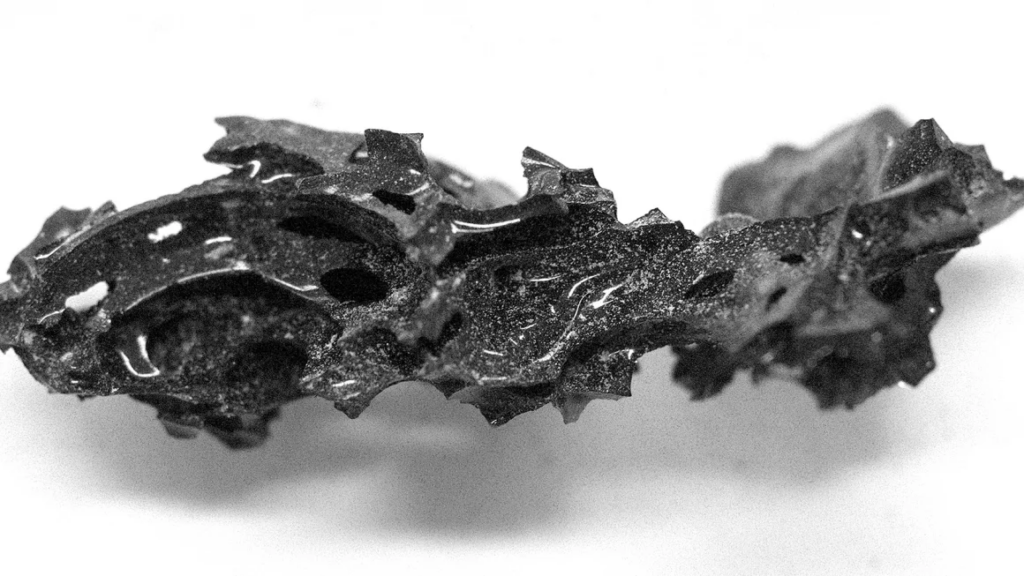
Unraveling the Formation of Fossilized Brain Tissue in Vesuvius Eruption Victim
A remarkable discovery has shed new light on the catastrophic eruption of Mount Vesuvius in AD 79. Scientists have determined how a black, glassy substance found inside the skull of a victim in Herculaneum—a coastal town annihilated alongside Pompeii—was formed. The substance, believed to be fossilized brain tissue, has captivated researchers since its discovery in 2020.
Unraveling the mystery
The remains belonged to a young man who was found lying face down on a bed, buried by volcanic ash. Recent analysis of the glassy material within his skull and spinal cord suggests that his body was exposed to temperatures exceeding 510 degrees Celsius (950 degrees Fahrenheit) before undergoing rapid cooling. This extreme heat and subsequent vitrification process turned soft tissue into glass, an extraordinary and exceedingly rare phenomenon.
Guido Giordano, a volcanologist at Roma Tre University in Rome and lead author of the study published in Scientific Reports, explained, “The process of transformation of anything liquid into glass is the fast cooling, not the fast heating.” He compared it to the formation of volcanic obsidian, which occurs when lava rapidly cools, such as when it enters water.
The role of a superheated ash cloud
Pyroclastic flows, fast-moving currents of hot volcanic material, and toxic gases, engulfed Herculaneum, but the study suggests they alone could not have vitrified human brain tissue. These flows likely did not exceed 465 C (869 F) and would have cooled too slowly to create glass. Instead, researchers propose that an intensely hot, fast-dissipating ash cloud provided the necessary conditions for vitrification.
Unlike pyroclastic flows, which travel along the ground, an ash cloud is airborne but remains linked to the flow, Giordano explained. “What is an ash cloud? It’s a dilute part of the pyroclastic flow. It’s usually formed at the edges, above and laterally, where most of the material is like an avalanche or landslide, but the peripheral part is of finer particle ash. These clouds can be hot enough to kill you.”
To verify their findings, Giordano and his team conducted experiments, systematically heating and cooling fragments of the glass found in the skull and spine. Their results confirmed that the vitrification process required temperatures of at least 510 C (950 F).
“The ash cloud basically instantly killed the people, because they were engulfed in a cloud that was probably about 510, maybe 600 degrees (Celsius),” he added. A fine layer of volcanic ash beneath the rubble in Herculaneum may have been deposited by this lethal ash cloud.
Debate over the discovery
Despite the compelling findings, some experts remain skeptical. Alexandra Morton-Hayward, a forensic anthropologist at the University of Oxford, questions whether the glassy material is truly brain tissue.
“Vitrification of soft tissue was incredibly unlikely,” said Morton-Hayward, who has compiled an archive of over 4,400 ancient brains. She argues that organic tissues, which are primarily composed of water, typically require rapid cooling to subzero temperatures—a process known as cryopreservation—to form glass. “I’m not convinced this (artifact) is the one and only exception to this rule.”
However, Giordano maintains that the material is organic in origin. Previous research has revealed the presence of neurons and proteins within the glassy substance, further supporting the theory that it once constituted brain tissue.
As scientific inquiry into this extraordinary discovery continues, the findings raise fascinating questions about the impact of extreme volcanic events on human remains, offering unprecedented insight into the deadly power of Mount Vesuvius.





